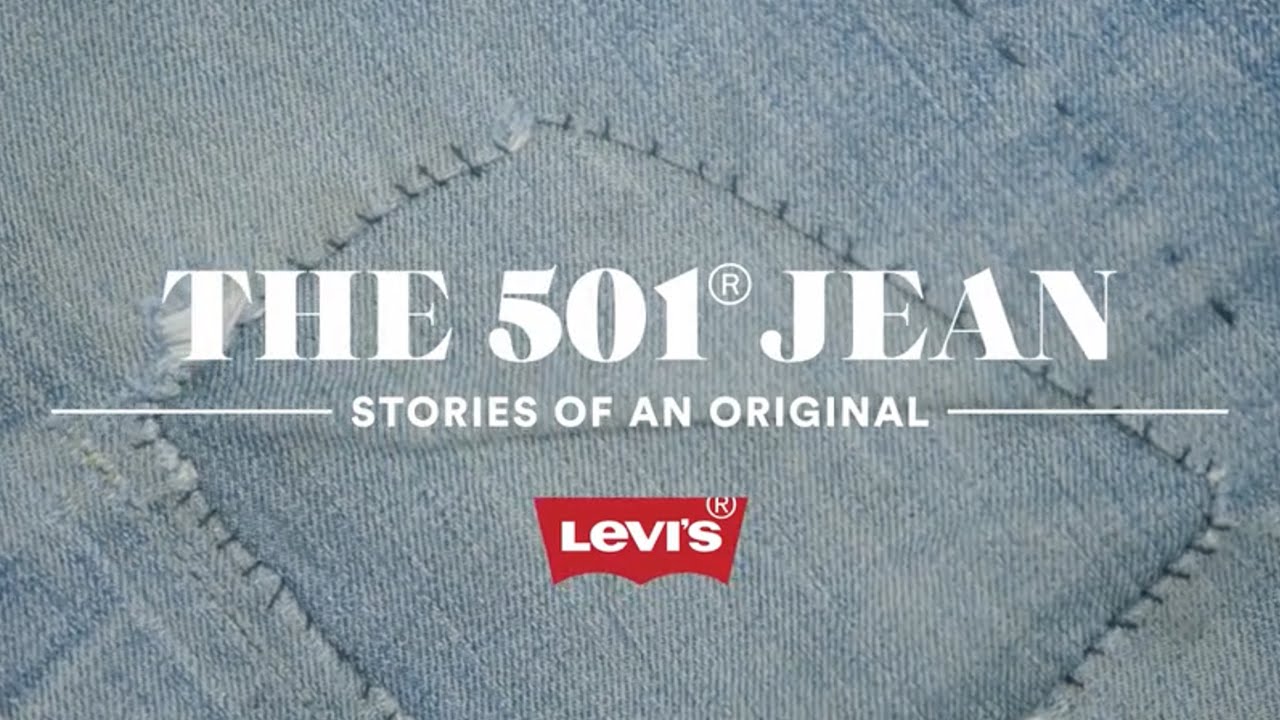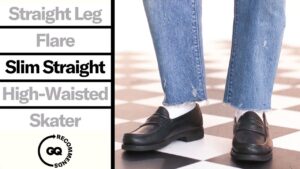Throughout my life, nothing has been handed to me; every achievement has been a product of hard work. This constant movement is crucial – without it, one risks fading into obscurity. In California, 1873, this ethos was evident among miners who needed robust trousers for their demanding work. Enter Levi Strauss, a Bavarian dry goods merchant, and Jacob Davis, a tailor. Together, they were granted a patent for reinforcing trousers with rivets at stress points, leading to the birth of the American blue jean: the Levi’s 501.
In 1915, Levi’s and Cone Denim from North Carolina forged a lasting partnership, symbolized by the “golden handshake.” This collaboration has stood the test of time, now reaching beyond a century. At the factory, where I’ve worked for nearly 20 years, the cherry wood floors and draper looms work in harmony, crafting the unique denim that defines the 501. Our machines are vintage, demanding careful, loving attention. My brother and I, both loom fixers, liken the wooden floor’s function to a rocking boat, creating a rhythm that’s integral to the weaving process.
Since 1927, Levi’s has incorporated a red thread along the selvedge seam of the 501s, a mark of quality now known as red line selvedge. The 501s are famously ‘Shrink-To-Fit’, adjusting perfectly to the wearer’s body.
Denim, as a fabric, narrates a person’s life through its wear patterns, reflecting their movements and experiences. I’m Russ Miller, and together with my son-in-law Mike Harris, we venture into old mines in the Western desert, searching for denim overalls from the 1800s – a unique form of archaeology. We’ve discovered repurposed jeans, used for everything from insulating steam pipes to plugging dynamite holes. These historical jeans tell stories, like the ones dating back to between 1893 and ’96, found in an old mine, showcasing the life of a miner.
The 501 has served a diverse range of workers, evolving alongside American industry. Today, it remains a staple for all kinds of workers, a testament to its enduring design. As for me, my work ethic is unwavering, whether it’s helping a friend with livestock or enduring 12-hour shifts. There’s a unique satisfaction in creating something with your own hands, be it a motorcycle from spare parts or pursuing a DIY ethos in music and art. It’s about doing it yourself, regardless of the obstacles.
These jeans aren’t just about fashion; they’re about functionality, bearing the marks of hard work, like the rust stains from a water catcher or burn marks from motorcycle exhausts. They are witnesses to our labor and creativity, enduring as the crafts of cast bronze, glass blowing, and stone masonry. In these jeans, art and work converge, telling stories of resilience, creativity, and the enduring spirit of hard work.
Hard works hurts nobody. It’s what keeps you going, really. It started out being purely functional. That thing became a style leader. I guess it’s very American.
We are the people who always head west and make something out of nothing. This one item of clothing has transitioned through all those times and found its place. I feasted on cowboy films, images of cowboy stars wearing jeans. I mean, one went with the other. I did grow up in Texas.
And cowboys, you don’t want to take them home to mom and dad, but you certainly wanted to be on the dance floor with them.
My fantasy was to be a cowboy. Levi’s were a part of having a cowboy outfit. In the movies, they all wore jeans. Can you imagine John Wayne in baggy jeans?
It wouldn’t work. I don’t know how they got stylish in the general public, but somehow they did. The Western films of the ’30s meant the whole country wanted a piece of the cowboy lifestyle. For the first time, folks were wearing 501s for its look. Nonetheless, function always informed its evolving design.
They’re a representation of every period in the same way a good piece of design is. If you see an Eames chair in the middle of a bunch of garbage, you go directly towards it and Levi’s are that way too.
It’s perfect design. All of these evolutions and changes were because there was a specific need, or because it functioned better. Form fixed function so if you build it to last, the fashion comes second.
All classics were born out of utility. It comes from people who needed to work in them, and I think that story makes me feel like I’m not buying into something that is a statement. It works, it’s not trying to communicate, really anything.
It is made of four pieces of fabric essentially, because if there was more, there would be more seams and it would be able to rip in more places. I don’t want anything around me, even a pencil or anything that’s not well designed.
A 501 jean is as plain as a glass of water.In 1934, the first women’s jeans appear. Lady Levi’s are in Vogue magazine a year later. They had come a long way from the mine.

By the ’50s, Hollywood stars had elevated this humble utilitarian garment to a newfound glamorous status.
The 501 became a fashion icon. Maybe the sexiness of a woman wearing jeans is the idea of playing with masculinity and femininity. If you put an incredible beauty like Marilyn Monroe in Levi’s and some rugged look, just shows how beautiful and feminine and sexy they are. You have James Dean and you have everybody in the 50s is like, man, wearing jeans means you’re cool and you’re a rebel! It’s sort of against the law to just be the chick that’s just happy with wearing jeans and a t-shirt.
That’s what society was telling women that they wanted us to look like. And women kind of said, wait a minute. No! My butt looks amazing in these, so I’m going to do this instead. These are 501s and they’re a good place to keep my hands.
I am wearing a short man’s jeans. I like to see my boots. These are the 1955. They’re just rock and roll. I’ve been street racing with my Camaro.
A good set of cowboy boots, Levi’s 501s, white shirt, or like today, a red shirt.
As I’ve gotten older I like them a little bit higher. How it’s tapered, if it’s cropped, if they cut it, if it’s with a wing tip, if it’s with a perfect cuff. It was a whole math part of buying the jeans. Your inseam should be two inches, and your waist should be three inches, and then they’re going to shrink, and then they become perfect.
When I saw this, I was just really, really happy. It’s air-conditioned. Good for riding a bike. The wind blows right up it! The cool thing with Levi’s is they’re easy to manipulate, tweak, reconstruct, rework, reinterpret.
I rolled them in the dark. It’s a bit indecent… I’m a 501 guy for 20 plus years.
You either had to wear women’s jeans or I would get 501s and then sew them up. I would taper the ankles and just be moshing with 50 sweaty boys plus me. You know, if your grandmother sews your ripped crotch or ripped knee with a little strawberry patch, that’s yours.
I never had that done. Some girls would wear out two little holes on their little butt cheek.
What a lot of people want to say when they’re wearing 501s is that, I’m almost above trend. Yeah, it’s kind got a few holes. I’ve had these for like, a hundred years. 501s, penny loafers, and the white Beefy-T t-shirt. It attracted the girls.
Let’s be honest. My mom was always, “You have to wash it, that’s dirty.” But I was like, “No, I like the jeans crispy. I like money crispy, and I like my jeans crispy.” I saw a Levi’s ad on the big screen.
“It’s in my mind and in my soul. “It’s in my generation.
“You gotta leave it alive and walk it alive “and live in jubilation. I said Levi’s, Levi’s, you gotta walk in the Levi’s.” I excommunicated myself.
I dropped out and went elsewhere. Well, that looks pretty rough. Yeah, but at least it’s freedom. GI’s returned from World War II with mechanical skills and shell shock. Biker clubs replaced the brotherhood and adrenaline they’d got used to in the military.
These are people that are in a tour of duty.
They’re actually in combat. What happens is naturally you begin to form bonds through a military system that outlasts that system. Your guy who you’re in the fox hole with who can rekindle that or recreate that, in a system like a bike club. I’ve been riding since 1941.
This jacket, I got it back in ’65 because I was in the Hell’s Angels. Well we wore Levi’s. They had to be tough. Just like women, you never give up on them! Bikers had a look: A Levi’s trucker jacket and 501s could withstand the wind, rain, and whatever else the road dealt.
It was also a canvas to show their affiliations. If you’re rocking a Harley of course you’re going to have on a pair of salty old crazy Levi’s you got caught in the rain. And the more you wore them, the cooler they get. In the ’50s, young farm workers, turned rockers, wore their 501s on stage. This juvenile delinquent style led to Levi’s being banned in many schools outright.
“Troubled kids headed for trouble, with destruction and violence their only outlet. In 1960 Levi’s officially adopted the term jeans, the slang term used by teenagers.
Levi’s became a rock and roll go-to. People dressed up to get on stage and all of sudden you were like, here you are in the same denims that you were digging your ditches in yesterday. It’s almost like a punk move, when rock music kind of came to the fore.
It had a lot to do with honesty. I think people saw wearing denim on stage as kind of a symbol of that. Punk rock to me was jeans, t-shirt, boots. And I had a length of chain for a belt. Because I had to take it off and brandish it as a weapon.
I’m no tough guy, trust me. I’m very proud of all my record covers. I have some clinkers, but I’m not going to tell you which ones. This is Neil Young, this is After the Gold Rush. They’re patched, which was the style.
I mean look at the jean guys, man. Everybody in this photograph are wearing jeans except the manager and the record producer.
Make of that what you will. It was and still is the garment of the outlaw, the rock and roller, the biker, the punk rocker, and a lot of other cultures that might not be allowed into the White House for dinner. In the ’60s, intellectuals and artists adopted 501s, too.
Crowds wore them through decades of activist movements. From beats to hippies, to LGBTQ rights, to the fall of the Berlin wall. It was a whole period about saying no and rebelling against things. I’ve always had a sense of humor about rules. Wearing Levi’s was an act of rebellion.
I was a photographer and I did a book on gay fashion from the ’70s. The 501s in this culture communicated gayness. There’s all these other signifiers: you could add keys, you could have handkerchiefs, put leather chaps over them. Some people would use sandpaper on their jeans in the crotch area. I got my first pair of 501 blues when I was twelve.
I saved up my birthday money. I got a size 40, although I was a size 28 waist. 501s, it was synonymous with skateboarding at the time. I fancied myself as a skinhead or rude boy, definitely a rockabilly. I wrote graffiti, hip hop culture; the 501 just fit any of them.
Mods and rockers, Beatle freaks, punks, and skunks, and cooks and geeks, which pretty much sums up Levi’s. Emulating Patti Smith and The Ramones and people who were living like paupers in New York City. I inherited a pair when I was a kid. My brother was a suedehead. That was like a two or number three skin head.
The uniform was Doc Martens and 501s. I had to hide them. I was on my way to rabbinical school and I wasn’t supposed to be packing jeans with me. And they weren’t necessarily wearing them for any other reason than they found them, or some chick stole her boyfriend’s pants. The 501s are the Australopithecus of cool jeans.
I’ve been through a lot of different scenes over the time and seeing things in life repeat themselves. I can remember a lot of different periods in a long life.
Times change right? But it stays the same. We are pretty simple creatures.
.







Leave a Comment